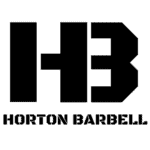Glute Ham Raise vs Back Extension (Benefits, Differences)
In the world of strength training, the Glute Ham Raise and Back Extension are two effective exercises to target the posterior chain. Both exercises have their own unique benefits and can be effective in building strength, improving athletic performance, and reducing the risk of injury.
So, what’s the actual difference between the two?
The short answer: A Glute Ham Raise starts with a Back Extension (also known as a Hyperextension), but then also includes a leg curl similar to a Nordic Hamstring Curl.
Continue reading for a more detailed answer. I will explain the key differences between these two exercises, their benefits, and how to properly perform each exercise to maximize their effectiveness in your training program.
Let’s start with the Glute Ham Raise.
Glute Ham Raise
Equipment Needed
- Glute-Ham Raise Machine
Step-by-Step Instruction
- First, you are going to want to get the glute-ham raise machine adjusted to the correct length.
- I recommend adjusting the machine so that your hip crease is at the end of the padding of the machine.
- Locking your feet in, facing the ground, keep a neutral spine by focusing your eyes on the floor below.
- Take in a deep breath, brace the abdomen, and keep your hands on the handles until you are ready to perform the eccentric movement.
- Once ready, take your hands off the handles, extend your body, keep your arms at your side, and control your body down until your torso is about perpendicular to the floor.
- Pause for 1 second in the bottom of the position to maintain stiffness in the muscles before coming back up.
- After 1 second of the isometric hold, pull yourself back parallel to the floor, engaging the glutes, hamstrings, and low back, while also keeping stiffness in the abdomen and upper back.
- At this point, you have completed a hyperextension.
- From this position, you are going to keep the toes flexed up toward the shin, pull with the hamstrings, and extend the glutes until your torso is perpendicular to the ceiling.
- Slowly lower your body back down to the parallel to the floor position to prepare for the next repetition.
Coaching Points
One of the common mistakes I’ve seen with this movement is athletes will pull with the hamstrings and not engage the glutes.
What this looks like is the athlete leaves their hips behind and they don’t quite get to perpendicular because they didn’t extend the hips and engage the glutes.
Glute-Ham Raises are surprisingly easy to mess up. One of the easiest ways to make a mistake is going down too fast and “whipping” yourself back to the starting position. As with any exercise, the setup, initial breath before eccentric movement, maintaining control, pausing, and breathing out during concentric contraction are important.
Glute-Ham raises are a great movement to use for accessory work after the main work is done for the session and rehabilitation purposes.
It is important for the lifter to maintain a neutral spine, maintaining tension in the abdomen and upper back. Remember to breathe in and hold the breath during eccentric (lowering your body) and breathe out as you perform the concentric movement (bringing your body back up).
Don’t have a Glute Ham machine? Here are some of my favorite Glute Ham Raise alternatives that can be used as a replacement.
Benefits of Glute Ham Raises
The primary benefit of Glute Ham Raises is that they effectively target and strengthen the hamstrings. Strong hamstrings are important for knee stability, running speed, and preventing hamstring injuries.
Glute Ham Raises also activate the glutes, which can often be neglected in training. Improved glute activation can lead to reduced lower back pain, and improved athletic performance.
Glute Ham Raises can improve hip extension, which is important for movements like sprinting, jumping, and deadlifting. Strong hip extension also translates to better athletic performance and reduced risk of injury.

Tired of coming up with your own workouts? But don’t want to pay an arm and a leg?
I post workouts 5 days a week right here. (Did I mention they’re free?)
Hyperextension (aka Back Extension)

Equipment Needed
- Glute-Ham Raise Machine
Step-by-Step Instruction
- First, you are going to want to get the glute-ham raise machine adjusted to the correct length.
- I recommend adjusting the machine so that your hip crease is at the end of the padding of the machine.
- Locking your feet in, facing the ground, keep a neutral spine by focusing your eyes on the floor below.
- Take in a deep breath, brace the abdomen, and keep your hands on the handles until you are ready to perform the eccentric movement.
- Once ready, take your hands off the handles, extend your body, keep your arms at your side, and control your body down until your torso is about perpendicular to the floor.
- Pause for 1 second in the bottom of the position to maintain stiffness in the muscles before coming back up.
- After 1 second of the isometric hold, pull yourself back parallel to the floor, engaging the glutes, hamstrings, and low back, while also keeping stiffness in the abdomen and upper back.
Coaching Points
Hyperextensions are surprisingly easy to mess up. One of the easiest ways to make a mistake is going down too fast and “whipping” yourself back to the starting position. As with any exercise, the setup, initial breath before eccentric movement, maintaining control, pausing, and breathing out during concentric contraction are important.
Hyperextensions are a great movement to use for accessory work after the main work is done for the session, warm-ups, and rehabilitation.
It is important for the lifter to maintain a neutral spine, maintaining tension in the abdomen and upper back. Remember to breathe in and hold the breath during eccentric (lowering your body) and breathe out as you perform the concentric movement (bringing your body back up).
Don’t have a Glute Ham Machine? Here are 11 Hyperextension alternatives to train your posterior chain.
Benefits of Hyperextensions
Many people only think of the abs when referring to the core, but the low back is an important part of the core.
Along with the glutes and hamstrings, hyperextensions work the erector spinae muscles, which are the muscles that run along the spine and are responsible for extending the back. By strengthening these muscles, hyperextensions can help improve performance in larger compound movements like Back Squats and Olympic lifts.
Strengthening the lower back and core muscles through hyperextensions can also help prevent injuries and improve overall physical performance for sports or even just daily activities.
Glute Ham Raise vs Back Extension: Which is Better?

Now, let’s take a side-by-side look at the two exercises and discuss if one is perhaps better than the other for some common lifting goals.
Better For Developing Strength: Glute Ham Raise
Glute Ham Raise is going to be better than Back Extensions for building overall strength because in addition to working the glutes and low back, they also really challenge the hamstrings.
Having said that, this is a scenario in which Hyperextensions are actually better for developing glute and, especially, low back strength.
If you were to start doing weighted Back Extensions – holding a plate or a dumbbell or utilizing a resistance band – you would build more strength in the glutes and erector spinae.
The hardest portion of a Glute Ham Raise, by far, is the leg curl portion. That will always be the limiting factor of the movement. By removing that part of the lift and focusing only on the Back Extension, you can add much more resistance and it will actually become better than the Glute Ham Raise.
Better For Beginners: Back Extensions
I’ve spent my whole career working with elite-level athletes and some of them can struggle at first with Glute Ham Raises. It is an extremely challenging exercise to do if done correctly.
I don’t like to give beginners exercises they’re potentially going to fail at. I find it’s better to stick with basic movements early on and build strength and confidence. Then, introduce more complex and more challenging movements over time.
For these reasons, I believe Back Extensions are the better exercise to start off with beginners.

Need a Training Program?
Coach Horton has 20 years of experience training elite level athletes at schools like the University of Tennessee and Georgia Tech. He has also written plenty of programs for other coaches and friends and family.
So, whether you need a program to improve your performance in your sport or you just want to look good at the beach, there is a program designed just for you.
Final Thoughts
I just spent the back half of this article comparing if Glute Ham Raises or Back Extensions are better than the other. The truth is, assuming you have the proper equipment, there is no reason you can’t have both exercises in your strength training program.
Both exercises are effective and can be used to emphasize different aspects of the posterior chain. Plus, by utilizing both exercises you can add variety to your workouts and keep them from getting stale.
So, my final suggestion is to figure out how you can incorporate both Glute Ham Raises and Back Extensions into your training.

